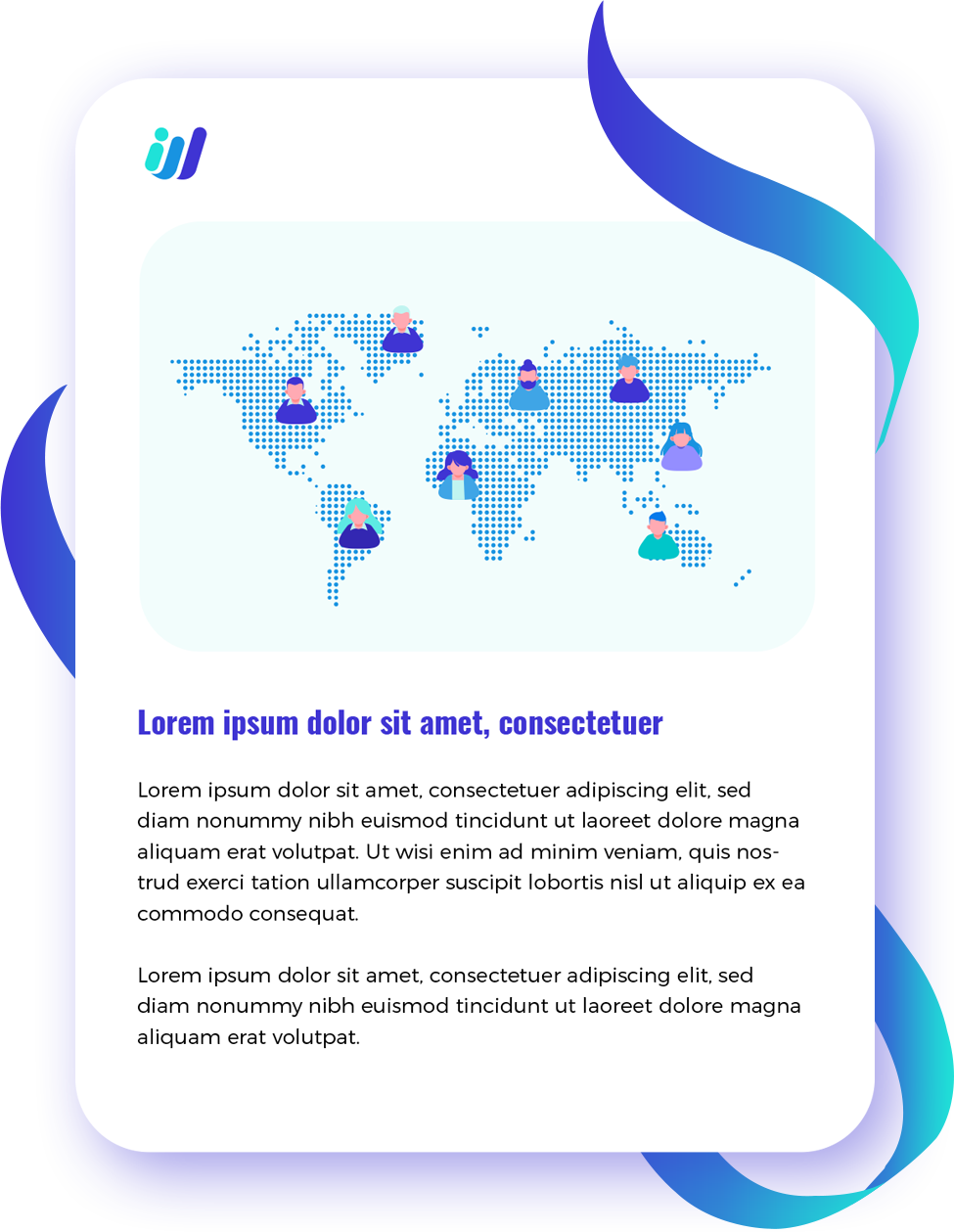Forget the buzzwords. Global hiring isn’t some trend — it’s survival.
A few years ago, international hiring was mostly about saving money. A cool hack for startups that couldn’t afford Bay Area engineers. But now? It’s become core strategy for companies that want to scale, innovate, or just stay afloat.
Markets shift fast. Local talent pools are tapped. And your next best hire might live halfway across the world. If you’re not ready to bring them on board, someone else will be.
This isn’t another thought-leader fluff piece. It’s a straight-up guide for business leaders, founders, and people ops teams who want to build a great global team — legally, strategically, and humanely. Let’s go.
Why Global Hiring Gives You an Unfair Advantage
Let’s not overcomplicate this: the best person for the job might not live in your city. They might not even live on your continent.
- Local markets are drying up
In tech, design, data — demand is high, supply is thin. Try finding a great backend dev in London who isn’t either locked in somewhere or pricing themselves at five figures per month. But look globally, and you’ll find people who are just as sharp, sometimes sharper, and ready to work — without the Silicon Valley price tag.
Limiting your talent pool to a single city, country, or time zone isn’t just inefficient — it’s a losing move.
For a deeper look at how global recruitment expands access to talent and reduces costs, see Safeguard Global’s guide on international recruiting benefits.
- Cost savings are a starting point — not the point
Yes, salaries are often lower in other parts of the world. But that’s not the real story. What matters is what you can do with the savings.
Maybe you hire two engineers instead of one. Or put that budget toward a product launch, or better onboarding, or training. It’s not just about spending less — it’s about doing more with what you have.
- Diversity isn’t just nice to have — it’s how you win
Teams made up of people from different countries, backgrounds, and worldviews make better decisions. They see different problems. Ask different questions. Suggest different solutions.
When your product needs to work across regions and cultures, it helps to have a team that actually knows those regions and cultures. It’s not theory — it’s practical. Learn more in Lano’s article on the benefits of a global workforce.
- Future-proofing your ops
You want 24/7 support? You want resilience when one region shuts down for a holiday or a strike or a blackout? You want local insights as you expand?
Global teams give you all of that. It’s not just about talent — it’s about infrastructure.
Phase 1: Planning Before You Post a Job
Hiring someone internationally isn’t like filling a local role. It takes more prep — but the payoff is bigger if you do it right.
Start with: Why are you hiring globally?
Seriously. What’s your actual goal?
- Do you need a skill that’s impossible to find locally?
- Want to cover more time zones?
- Expanding into a region and want someone local on the ground?
- Looking for more affordable options to stretch budget?
Each of those goals leads to different hiring strategies. If you skip this question, you’ll end up hiring the wrong person for the wrong reason.
Then figure out: Who exactly do you need?
Write a candidate profile that includes:
- Skills they must have
- Languages they speak
- Time zones they need to overlap with
- Soft skills like independence, past remote work experience, or cultural fit
Be honest about what you actually need, not just what sounds impressive.
Pick your hiring model: Direct vs EOR
Now the tricky part — how do you legally hire this person?
You’ve got two options:
- Direct Hire – You set up a legal entity in their country. You handle payroll, taxes, compliance.
- EOR (Employer of Record) – A third-party company hires the person for you. They’re the legal employer. You just manage the work.
Direct hire gives you more control and may be cheaper long-term — but it takes time and legal setup. EOR is faster and lower risk, perfect if you’re just testing a market or hiring a few folks abroad.
Pick based on your risk tolerance, speed, and long-term goals.
Your employer brand now matters globally
This isn’t just about job boards anymore. If you want to attract top international talent, your company has to look like a place where international employees thrive.
Things that matter:
- Job posts in plain, clear English (no slang, no jargon)
- Info about your remote culture and benefits
- Real stories from current team members abroad
- Localized benefits (e.g., healthcare in Brazil looks very different from healthcare in the UK)
Remember: you’re not just convincing people to take a job — you’re convincing them to trust a company in another country that they might never visit.
Legal groundwork is not optional
Don’t guess here. Bad legal setup can cost you a lot.
You’ll need to understand:
- Labor laws in their country
- Tax obligations in both countries
- Whether they need a visa (and if you’re sponsoring it)
- How to handle IP, data privacy (GDPR, etc), and NDAs
- What happens if you have to part ways
If you don’t want to handle that, an EOR can cover most of it. If you do want to handle it, get a local lawyer involved. There’s no shortcut.
Phase 2: Finding, Evaluating, and Hiring International Talent
With your foundations in place, you can start the hiring process. But global recruiting takes a slightly different playbook.
Sourcing: Where to find the good people
Start broad, then go niche.
- Global platforms: LinkedIn, Indeed
- Remote-specific: We Work Remotely, Remote OK, Jobspresso
- Niche boards: Dribbble (design), Stack Overflow (dev), AngelList (startups), eFinancialCareers (finance)
- Communities: Slack groups, Reddit threads, Discord servers, GitHub projects
And don’t forget referrals. Great people know other great people — especially in smaller regional circles.
Job descriptions: Speak clearly, not cleverly
Write job posts that feel like a conversation, not a corporate memo.
Do:
- Use short sentences
- Be upfront about time zone requirements
- List must-haves vs nice-to-haves
- Share salary range if you can (transparency builds trust)
- Say what your company actually does
Don’t:
- Use metaphors (“We need a sales ninja”)
- Hide dealbreakers (“Must attend 9AM PST meetings daily” should be in the post)
Interviews: Adjust for global context
Don’t assume your normal interview process works globally.
Be aware of:
- Language fluency — give space, don’t rush
- Cultural differences in self-promotion or tone
- Tech limitations (some folks have less reliable internet)
- Time zones — don’t make someone interview at 3AM
Best practices:
- Use structured interviews (same questions, same rubric)
- Offer assessments when needed, but be fair with timeframes
- Keep candidates in the loop — ghosting kills your reputation abroad just as fast
Compensation: Fair pay, local context
You can’t pay a flat rate across 10 countries — but you can be transparent and consistent in your philosophy.
Start by:
- Researching local salary benchmarks
- Including mandatory benefits (social security, insurance, leave)
- Offering perks that make sense (home office stipend, coworking budget, mental health support)
The goal is fairness — not sameness.
Phase 3: Onboarding, Integration, and Long-Term Success
Hiring is just the first half. Keeping people happy, productive, and connected is where most teams drop the ball.
Onboarding remote hires: make it personal
Don’t just toss them a Notion doc and wish them luck.
Start before Day 1:
- Send a welcome email with a schedule and what to expect
- Ship any gear they need early
- Set up access to tools, accounts, and team chats
Day 1 and Week 1:
- Host a welcome call with their manager and key teammates
- Assign a buddy — someone who checks in regularly and answers “dumb” questions
- Run a simple virtual onboarding: who we are, how we work, where to go for help
First 30-60 days:
- Regular check-ins
- Clear goals
- Feedback loops both ways
Remote people need to feel like they’re part of the team, not floating on the edge of it.
Building a strong, global team culture
The challenge isn’t tech — it’s trust. People need to feel safe speaking up, sharing ideas, asking for help.
Things that help:
- Rotate meeting times so the same team isn’t always staying up late
- Write things down (decisions, processes, how-to guides)
- Celebrate wins publicly — including across time zones
- Have non-work spaces (Slack channels, virtual coffees)
And invest in cultural training. Not everyone communicates the same way — and that’s okay.
Managing across time zones: it’s doable
This isn’t about micromanaging. It’s about building habits that make async collaboration work.
Try:
- Clear expectations and documentation
- Shared project tools (Notion, Asana, ClickUp, whatever)
- Weekly updates written instead of meetings
- Scheduled overlap hours for key projects
- Respect for work/life boundaries — just because you’re online doesn’t mean everyone else has to be
It takes a little more thought. But once it clicks, it works beautifully.
Don’t Get Burned: Risks to Watch For
Hiring internationally isn’t just plug-and-play. There are a few big risks that can bite you if you’re not ready.
Permanent Establishment (PE) risk
If your overseas worker is doing core business activity in another country — like closing deals, running operations — that country might decide your company now has a taxable presence there.
It doesn’t happen often by accident, but when it does, it’s expensive.
Best practice: Avoid letting international employees sign contracts or run sales without legal advice. Or, use an EOR who handles that for you.
Tax residency rules (a.k.a. the 183-Day Rule)
A lot of people think “if someone’s there less than 183 days, we’re fine.” That’s not always true.
Some countries have stricter rules. Others don’t even use day counts — they look at the center of life or economic activity. It’s murky.
Best practice: Track locations. Talk to a global tax advisor. Don’t assume. Confirm.
Work permits and immigration issues
If someone’s relocating or traveling to your HQ, you may need to help with visas. Don’t assume they’ll “figure it out.”
Get help from an immigration lawyer or agency. The risk of delays — or denied entry — is real.
The Future Is Already Global
This isn’t just a hiring trend. It’s the new normal.
The companies winning right now? They aren’t the ones with the biggest offices or flashiest perks. They’re the ones that figured out how to work with talent anywhere.
That takes more than a job post and a Zoom link. It takes planning, systems, culture, and care.
But if you do it right, global hiring stops being a headache — and becomes your competitive advantage.


